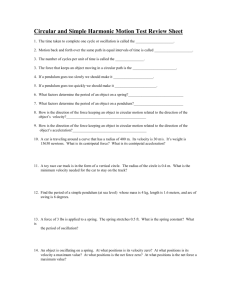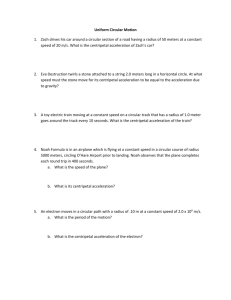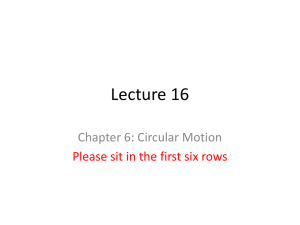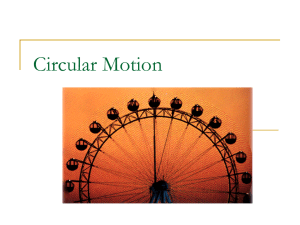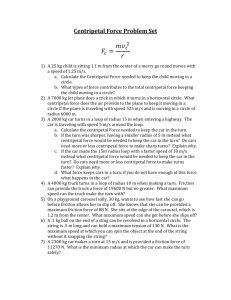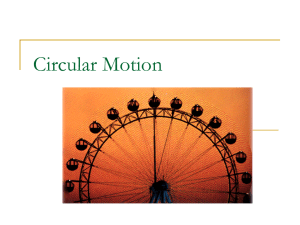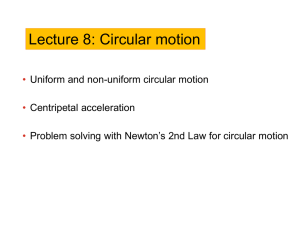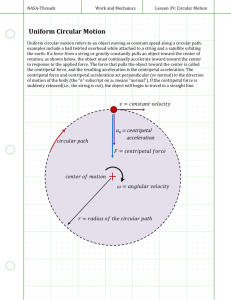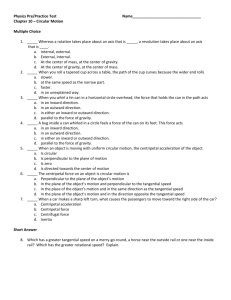Honor`s Physics Chapter 5 Notes
advertisement
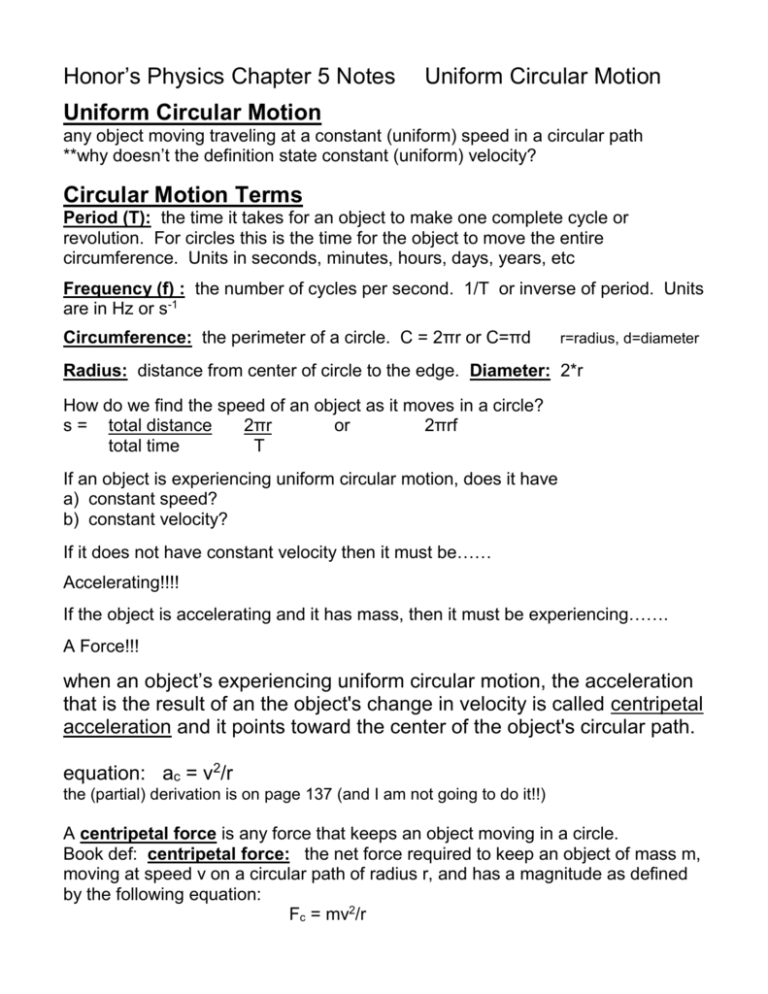
Honor’s Physics Chapter 5 Notes Uniform Circular Motion Uniform Circular Motion any object moving traveling at a constant (uniform) speed in a circular path **why doesn’t the definition state constant (uniform) velocity? Circular Motion Terms Period (T): the time it takes for an object to make one complete cycle or revolution. For circles this is the time for the object to move the entire circumference. Units in seconds, minutes, hours, days, years, etc Frequency (f) : the number of cycles per second. 1/T or inverse of period. Units are in Hz or s-1 Circumference: the perimeter of a circle. C = 2πr or C=πd r=radius, d=diameter Radius: distance from center of circle to the edge. Diameter: 2*r How do we find the speed of an object as it moves in a circle? s = total distance 2πr or 2πrf total time T If an object is experiencing uniform circular motion, does it have a) constant speed? b) constant velocity? If it does not have constant velocity then it must be…… Accelerating!!!! If the object is accelerating and it has mass, then it must be experiencing……. A Force!!! when an object’s experiencing uniform circular motion, the acceleration that is the result of an the object's change in velocity is called centripetal acceleration and it points toward the center of the object's circular path. equation: ac = v2/r the (partial) derivation is on page 137 (and I am not going to do it!!) A centripetal force is any force that keeps an object moving in a circle. Book def: centripetal force: the net force required to keep an object of mass m, moving at speed v on a circular path of radius r, and has a magnitude as defined by the following equation: Fc = mv2/r The direction of this force is toward the center of the circle and is therefore constant changing direction. The centripetal force is the external force required to make a body follow a curved path. Hence centripetal force is a kinematic force requirement, not a particular kind of force like gravity or electromagnetism. Centripetal forces can be friction, gravity, tension, magnetism, or any other force that keeps an object moving in a circle. It is not a stand alone force!! When a car is traveling along a curved road, what is the centripetal force acting on the car keeping it moving in a circle? What happens if this force goes away? When the centripetal force is removed, the object will then continue on a straight line path in the direction it was headed. This direction is always tangential to previous circular path and is at a right angle to the radius. What about the OTHER C-Force? This force in physics is known as the F-Word! It does not exist!!! What then is the force that pushes a passenger toward the right door when a car is making a left turn? THERE ISN’T ONE!!! There is no force it is just the effect of inertia. The person has a tendency to move in a straight line and they are intercepted by the door and they experience the normal force of the door pushing back, We will not be covering banked curves (5.4) in this class. Wednesday’s Homework: read 5.1-5.3; page 155 CQ 1, 3, 5; page 155 problems 1, 3, 5, 7, 9, 13, 15 Thursday’s Homework: Read 5.5-5.7; page 155 CQ 7, 11, 14; page 157 problems 27-33
